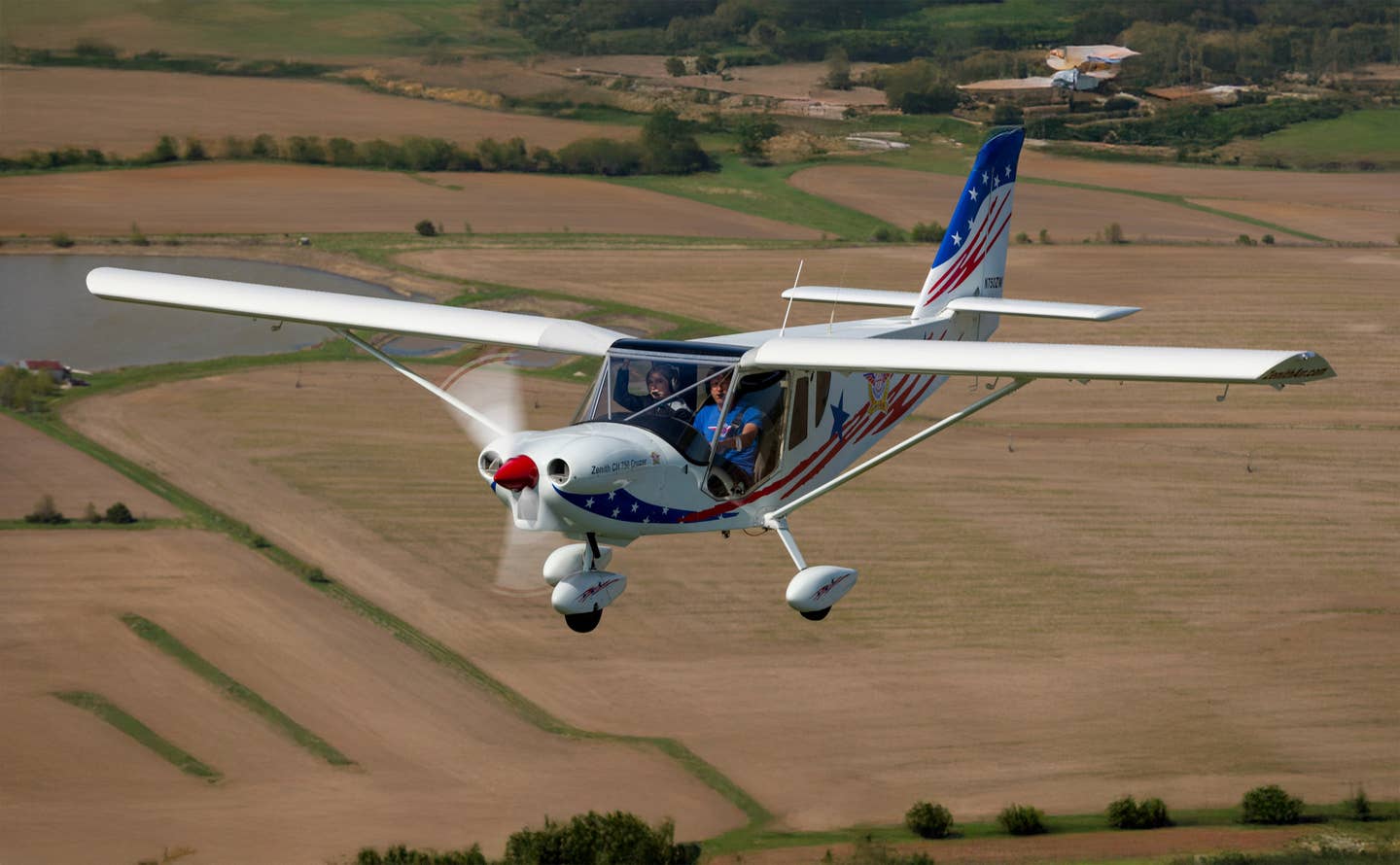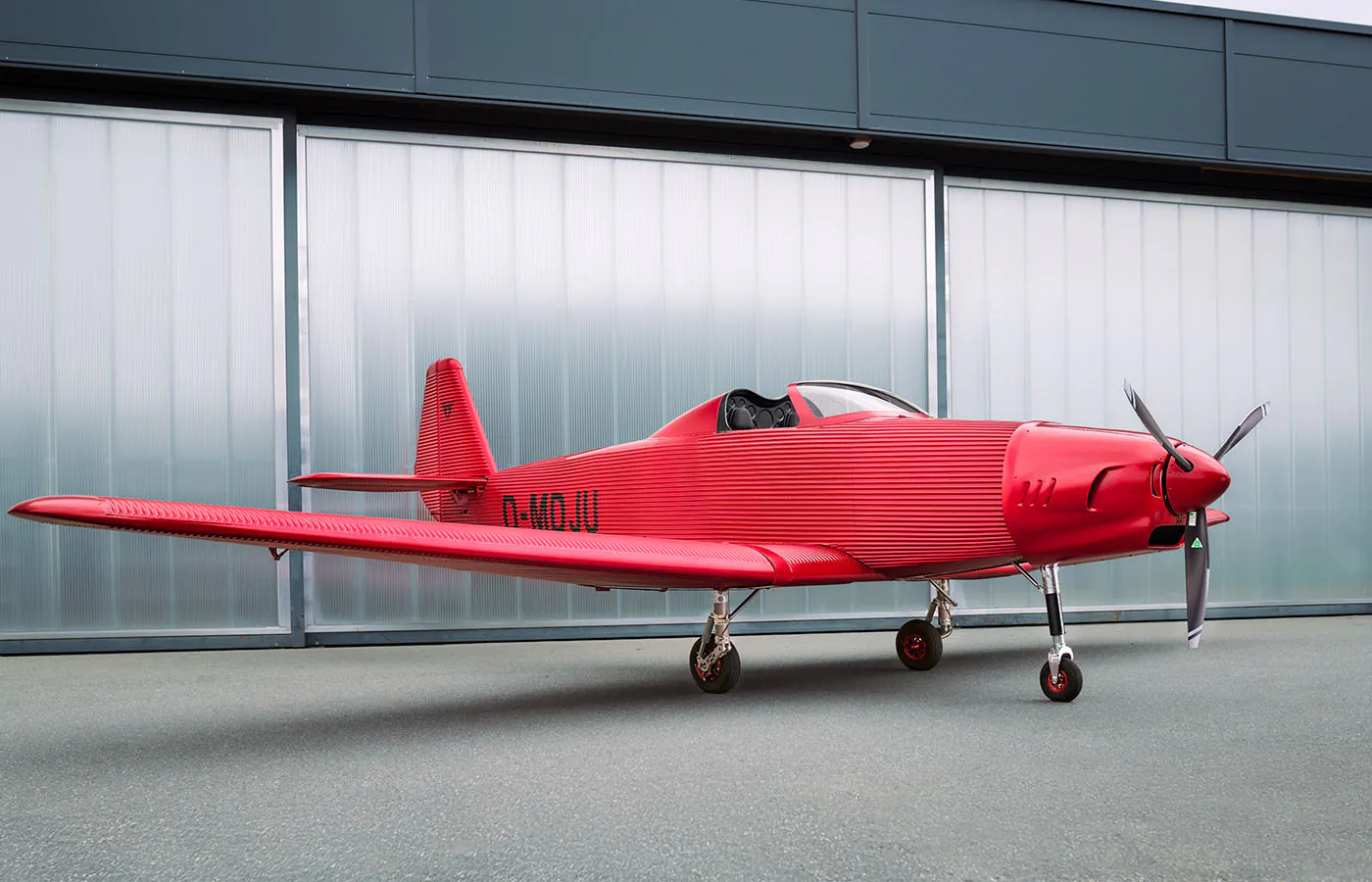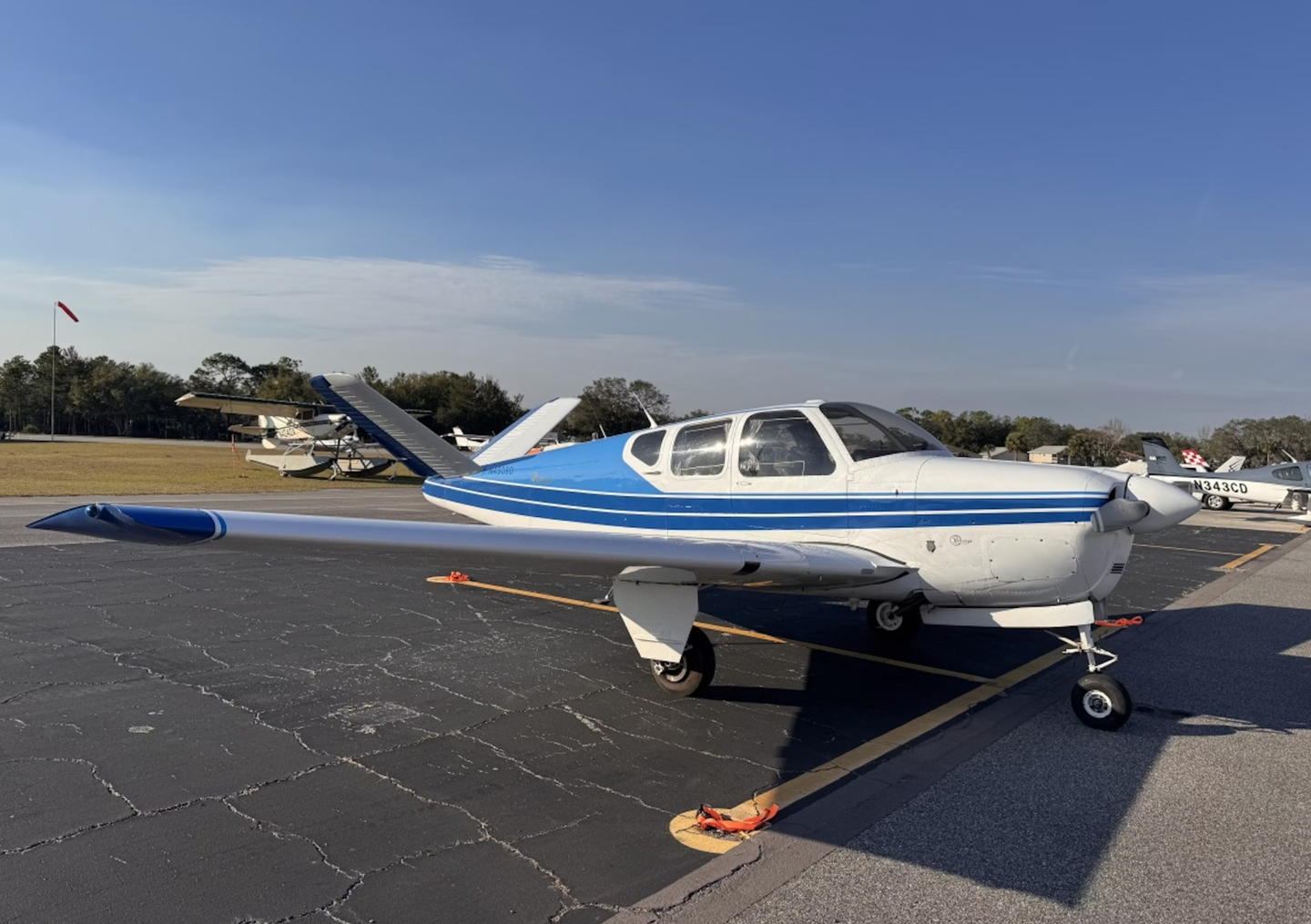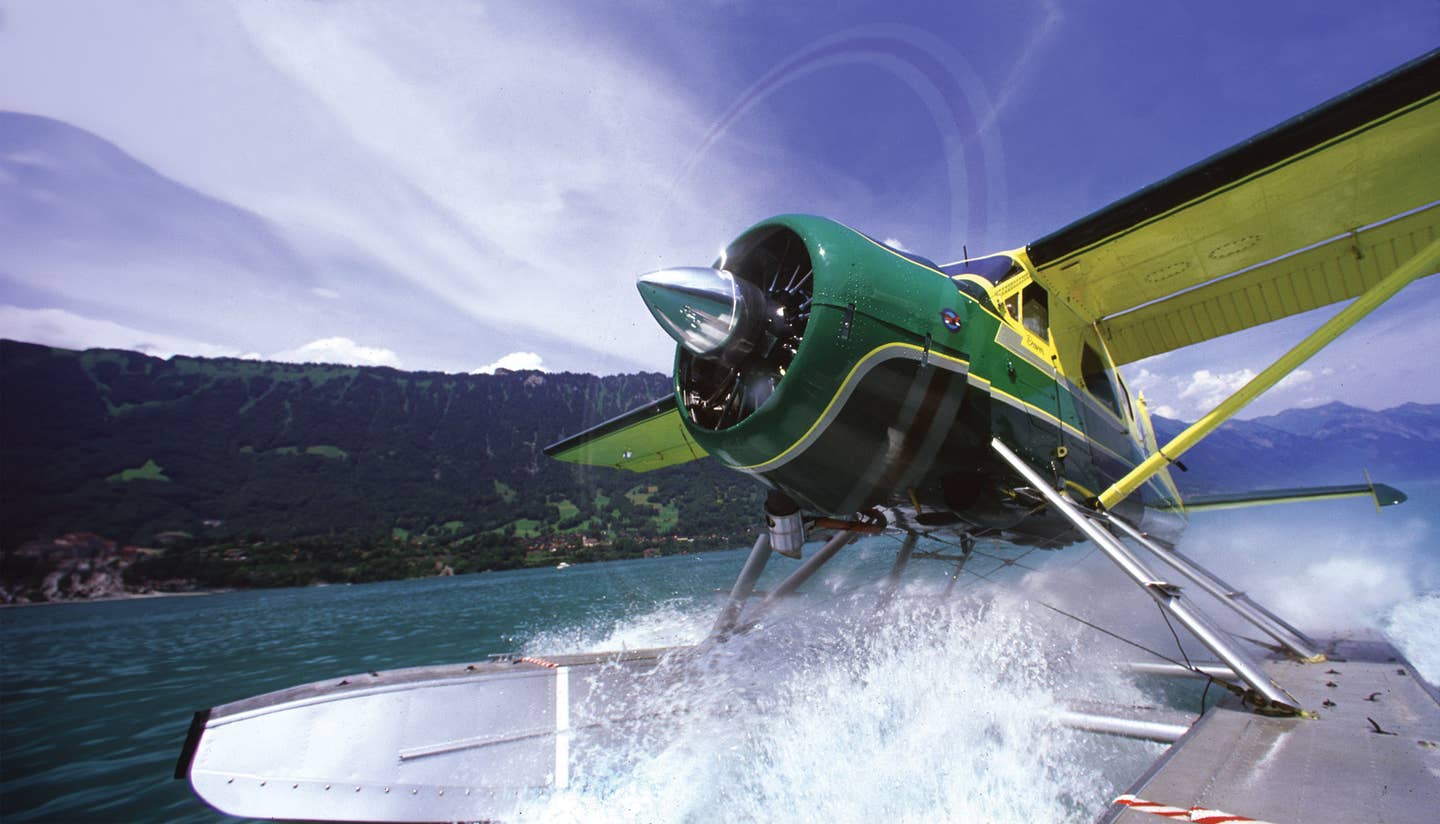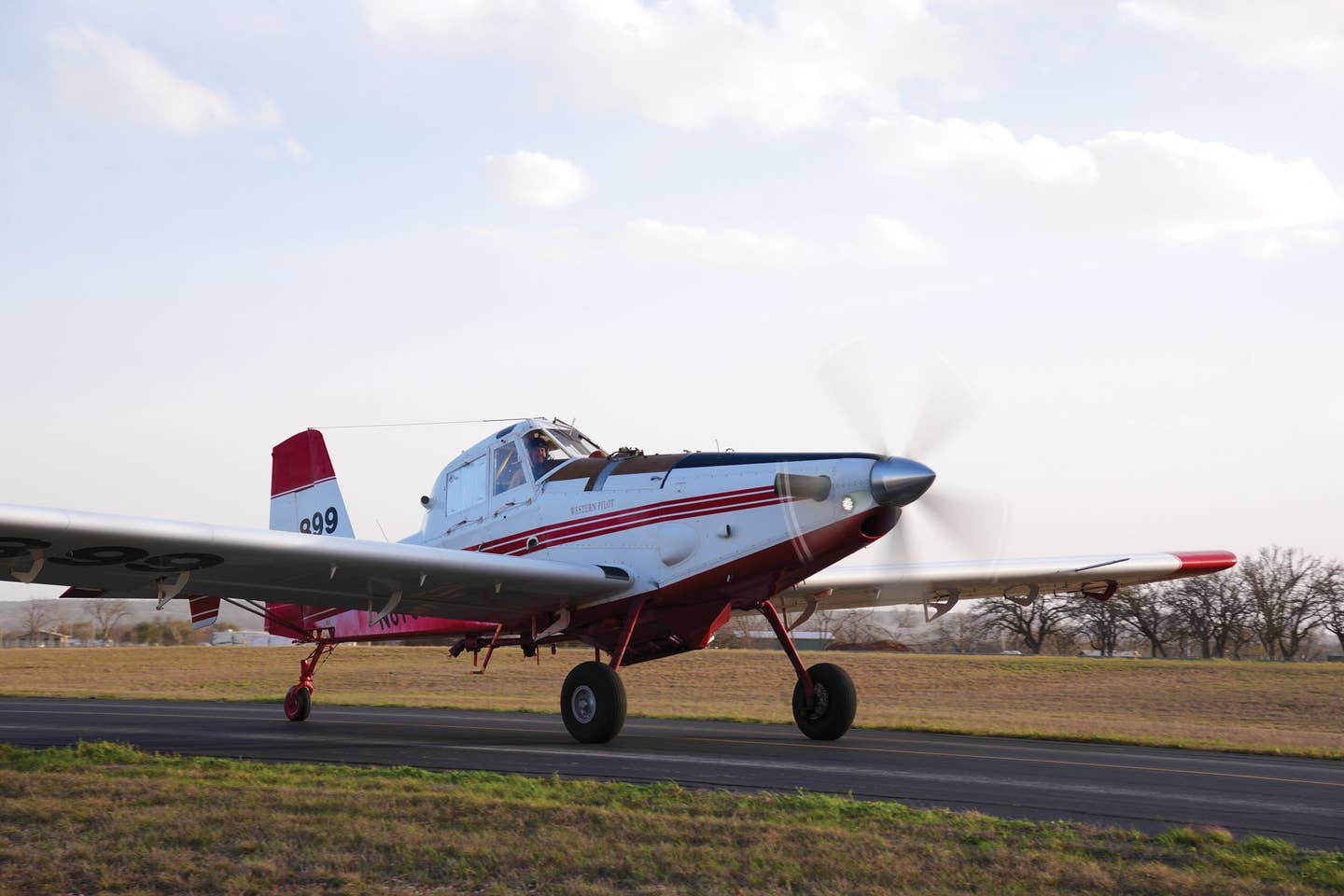Italian Fare
Tecnam’s P-Mentor is a perfectly capable trainer for the next generation of pilots.
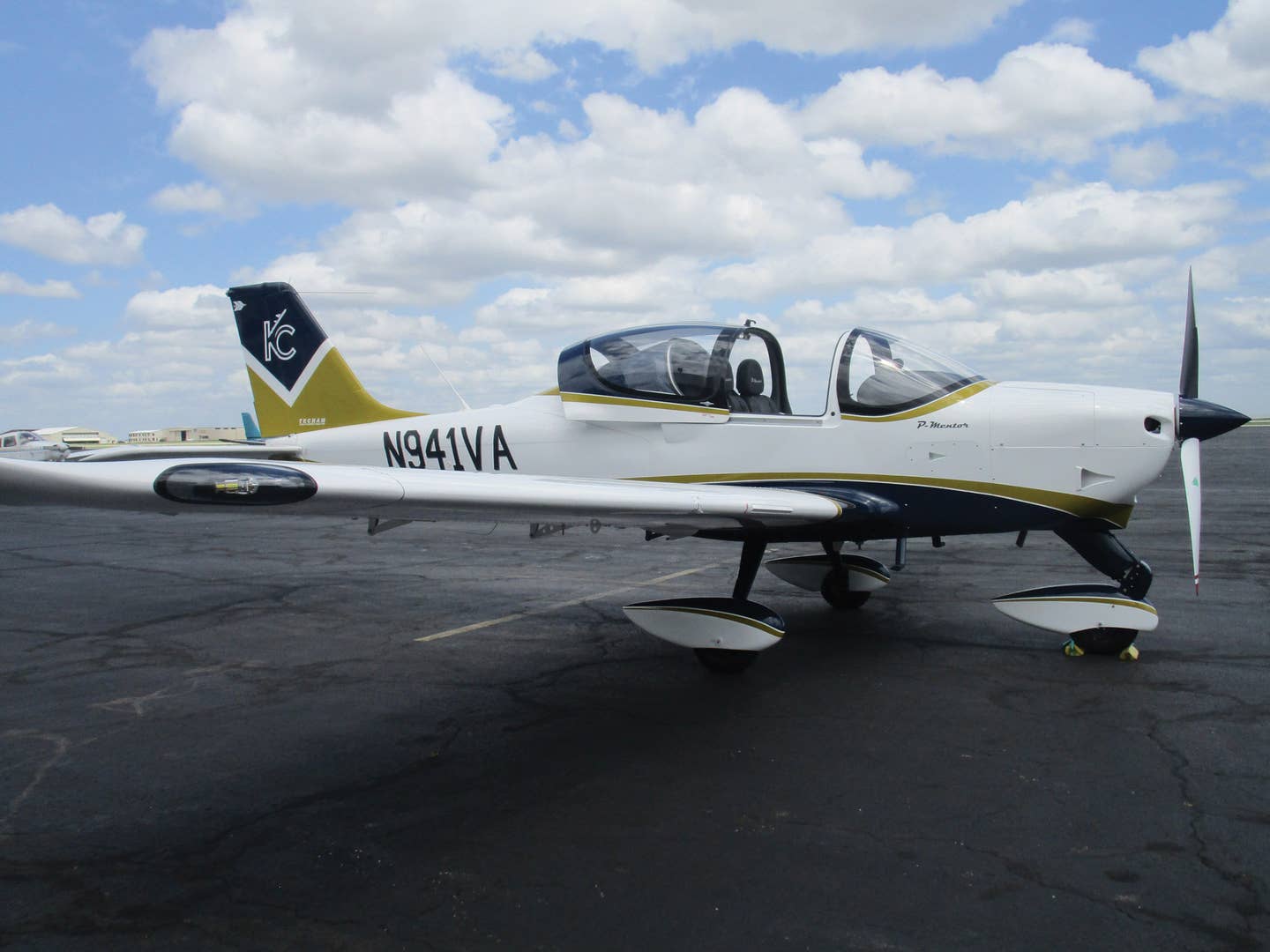
Images: Leroy Cook
One of the greatest quandaries facing flight school operators is the acquisition of replacement aircraft.
The aging fleet flown by many operators is steadily racking up hours, imposing more and more maintenance burdens on 50-year-old airframes while production of new airplanes has slowed to a trickle, and the cost of the few available is high.
Kilo Charlie Aviation, a 5-year-old aviation training center at New Century AirCenter (KIXD) near Kansas City, Kansas, has a 20-plane fleet of vintage trainers, primarily Piper PA-28s, and when owners Robert Renfro and Drew Konicek were ready to upgrade, they ran into challenges.
When they started looking at available options in 2022, narrowing down the candidates proved difficult. Most training aircraft were based on designs from the 1960s, largely overpowered and upsized for the mission. A two-seat dedicated IFR training airplane hadn’t been certified since the Cessna 152 of 1978.
Kilo Charlie was in need of a modern glass-panel trainer, adequate for a student and instructor, IFR capable, with low operating costs and, most importantly, capable of presenting well to this generation of prospective student pilots. Apologizing for a worn 50-year-old trainer’s appearance was not desirable when clients arrived at the airport in $50,000 cars.
Renfro and Konicek looked at every manufacturer’s offerings, and most sales departments essentially told them, “This is what we have. How many do you want?” Until they contacted Italian-based Tecnam, which said, “What are your objectives, and where do you intend to be in 10 years? We will have an aircraft to help you meet those needs.”
As it turned out, the P-Mentor from Tecnam filled all of Kilo Charlie Aviation’s requirements.
Who Is Tecnam?
Costruzioni Aeronautiche Tecnam S.p.A. is a privately owned manufacturer of single- and twin-engine light aircraft based in Capua, Italy. The Pascale brothers, Luigi and Giovanni, produced their first airplane, the P48 Astore, in 1948. Their later company was called Partenavia and was founded in 1957.
The fleet of Tecnam aircraft is wide and varied. We were told there are 33 variations available, from European ultralight models to light sport and Part 23 designs, including twin-engine P2006s and P2012s. Of those with numerical designation, the number represents the year of its engineering concept.
Naming the airplanes for marketing purposes led to the P-Mentor moniker. The design had its roots in the P96 Golf and 2002 Sierra LSA as an atypical low-wing Pascale design, but the P-Mentor is entirely new in execution, targeted precisely at the modern trainer market.
North American support is important, of course. Tecnam has a reassembly center in Sebring, Florida, and the American representative, Tecnam U.S., is headquartered in Wichita, Kansas.
David Copeland, director of sales for Tecnam U.S., said the company is the world’s largest privately owned aircraft manufacturer and was the number 1 seller of single-engine piston planes in the first quarter of 2024, according to the General Aviation Manufacturing Association (GAMA) figures.
A total of 45 P-Mentors were delivered in Q1, with projections of a total of 300 Tecnam aircraft to be sold by year-end. In the GA world, those are creditable numbers. All of Tecnam’s production is built-to-fill orders.
Tecnam P-Mentor
- Price, Fully Equipped: $385,000
- Wingspan: 29.5 ft.
- Wing Area: 128.1 sq. ft.
- Length: 22.1 ft.
- Height: 8.2 ft.
- Maximum Gross Weight: 1,587 lbs.
- Empty Weight, Standard: 959 lbs.
- Useful Load, Standard: 628 lbs.
- Baggage Capacity: 66 lbs.
- Fuel Capacity, Total: 37 gal.
- Fuel Capacity, Usable: 34 gal.
- Seats: 2
- Wing Loading: 12.39 lbs./sq.ft.
- Power Loading: 15.87 lbs./hp
- Engine: Rotax 912iSC3, 4-cylinder, opposed, air and liquid cooled, normally aspirated, gear-reduction drive, fuel-injected, 100 hp
- Propeller: MT composite, two-blade,
- constant-speed
- Maximum Cruise Speed: 117 knots
- Range, Max Range Power: 950 nm
- Rate of Climb, Sea Level: 750 fpm
- Max operating Altitude: 13,000 ft.
- Stall Speed, Flaps Down: 44 knots
- Takeoff Distance: 1,017 ft.
- Takeoff Over 50-ft. Obs.: 1,706 ft.
- Landing Distance: 650 ft.
- Landing Over 50-ft. Obs.: 1,280 ft.
Evaluating the P-Mentor
We were privileged to be given a sampling of one of Kilo Charlie’s new Tecnam trainers, under the tutelage of Baron Chen, CFII/ME instructor at the training center. The purpose of our evaluation was a comparison of the Italian import to legacy U.S. trainers.
Can the P-Mentor do the job of Skyhawks and Archers, and even the complex trainers used in commercial/instrument programs?
During the walkaround, we took note of the P-Mentor’s mostly
aluminum construction. Composites are employed for the cowling, fairings, and the wing’s one-piece leading edge, utilized for its maintainability purposes in flight school use. Driven rivets are found in the wing skins, with pulled rivets used in the aft fuselage and empennage.
Up front, the 100 hp Rotax 912 iSC3 engine is nestled under a sleek cowling, with oil and coolant radiator openings under the prop spinner. The LED landing light is placed farther below. Twin swing-up cowling hatches allow for preflight checks of the fluid levels and aft-of-engine labyrinth.
A Rotax 900-series requires a daily prop spin for “burping” the level in the oil tank. The propeller is an MT hydraulically operated, constant-speed, natural-composite, two-blade unit.
The steerable nose gear is supported by rubber shock absorbers, Mooney style. As with the main gear, carried on Tecnam-produced steel spring gear legs, it uses a 5.00 x 5 tire. The snazzy speed fairings may not survive the first 100-hour maintenance inspection in flight school use.
It is worth noting that initial versions of both the Cessna 150 and Piper Tomahawk needed an upgrade to a 6.00 x 6 main tire size to better survive student abuse.
The P-Mentor has three fuel-system drains—one per tank and another for the strainer. The tanks hold 18.5 U.S. gallons per side, leaving some 34 usable gallons available in all attitudes.
Despite the Rotax’s preference for 91-octane unleaded fuel, Kilo Charlie is presently operating on 100LL avgas. The entirely excessive full-fuel capacity could be adjusted to half tanks for normal training. For IFR operation, of course, there’s no such thing as too much reserve and diversion fuel.
Midspan stall strips are found on each wing’s leading edge. The stylish upswept wingtips enclose navigation and strobe light clusters. A pitot mast is under the left wing, with yoked static ports on the aft fuselage. An electric stall warning vane is provided. Electric flaps ride out on external tracks to a maximum of 30 degrees. The ailerons feature a small flow-control trailing-edge flap to enhance roll control.
The jaunty vertical fin and rudder enhance the fuselage lines, fitted with a fixed trim tab and aft position light. The broad stabilator carries an electrically adjustable balance tab.
Kilo Charlie’s first eight P-Mentors were fitted with the optional BRS ballistic whole-plane parachute system, housed behind the baggage area. With all the add-on equipment, that empty weight came in about 40 pounds over that of a standard airplane.
Mounting Up
Boarding is accomplished by returning to the front of the wing, opening the aft-sliding canopy, grasping the windshield frame, and mounting the step to reach a nonskid wing-walk area.
Dismounting is a bit trickier, operating in reverse while fishing for the unseen step with one foot. When climbing over the gunnels, there’s plenty of foot room ahead of the seats to make it easy to slide in, slithering around the dual control sticks. The slim seating is stylish and comfortable. N941VA was upholstered in a nice combination of leather and cloth, yet to be proven durable in school use.
The Garmin G3X Touch instrument panel has dual screens for PFD/MFD reversionary capability, backed up with a central GI-275 standby instrument. As a totally electric airplane, the P-Mentor relies on dual generators as well as the lithium ship’s battery, and the electrical system is 14 volts. Electrical switches are on the left subpanel, while the circuit-breaker array is on the right edge of the instrument panel. The BRS is fired by yanking a red handle under the left side of the panel.
The avionics, a GTN 650Xi, GNC 255A stand-alone backup radio and G500 autopilot controls, are centrally
mounted, with the power and propeller levers and the left-right fuel selector on a quadrant aft of the panel. The seats are broadly adjustable to fit a variety of pilot sizes. Handy storage pockets are on each sidewall, with utility power plug and headset jacks between the seats. The flap switch is on the subpanel, to the left of the quadrant. There is an optional simulated landing gear switch that can be installed on the right side, complete with lights and warning horn, for complex aircraft training.
Fastened in with the four-way restraints, we prepared to get underway.
Chen coached me through the starting routine—master switch on, main fuel pump activated, A and B engine-operating lanes on, fuel pressure confirmed, and prop cleared. There’s a “starting power” switch that must be held on while pressing the starter button, and the usual instant Rotax combustion commences. With the 912 iS fuel-injection management, there’s no choke or mixture to manipulate. Once running, three red switch guards are flipped into place, and we are ready to taxi out.
Nose-gear steering is light but not sensitive, with little need for differential braking. Visibility is good over and around the cowling’s hump. With the canopy open on the warm, dry day, we had plenty of ventilation. Large cabin air vents are provided as well.
The run-up consists of checking the individual “lanes” for continued one-out operation at 1,650 propeller rpm, and cycling the propeller control at 1,770 rpm. The engine-driven main and backup fuel pumps are confirmed, as are controls freedom and pitch trim and flap settings, shown on the G3X display.
Flaps are set to 15 degrees for liftoff. The trim toggles are atop the control sticks. Only one pilot’s side can be actuated at a time, as selected by a panel switch. The ballistic parachute handle’s pin is stowed, leaving it ready for use. Ducking the head, we slid the canopy closed into a central overhead latch then applied two extra latches at each forward corner
With the backup fuel pump on, we took to the runway.
Primary power management is by manifold pressure, leaving rpm to the prop governor—a bit unusual for a two-seat, Rotax-powered airplane. Baron told us to lift the nose at 50 knots, which proved correct for a takeoff about 900 feet down the runway. Climbing away at 70 knots VY once we brought the flaps up, we climbed at 650 to 750 fpm in the warm air. A cruise-climb of 75 knots trimmed climb rate only slightly and improved forward visibility.
The control stick falls nicely to hand, as they say, and we found control forces well balanced, more toward a touring airplane than a sport aircraft. Rudder use is required, as it should be, to make smooth roll entry and recovery, and there’s enough roll/yaw coupling to nudge a wing back to level with rudder.
Leveled out at 3,500 feet msl with outside air at 76 degrees F, we pulled the throttle back to 21 inches MP and set the prop rpm at 2,200, about 5,350 engine rpm, a normal training cruise. IAS settled on an even 100 knots.
Visibility is excellent everywhere but under the wing; some overhead sun protection might be welcome on a blistering hot day.
In maneuvering, we hunted for an attitude reference, as there’s no flat panel top or cowling to use.
Slowed Down
To enter slow flight for training, Chen had us set in 15 inches MP to slow expeditiously, parking us at 60 knots on the edge of the aural “stall, stall” warning generated by the watchful minder.
It took 21 to 22 inches MP to hold altitude once established in slow flight. The nudging of Garmin’s envelope protection had been disabled for our evaluation. Recovering to cruise flight for stall practice, we cleared the area and hoisted the nose in clean configuration, producing a clean stall break at 60 knots with power at idle.
Dirtied up with full flaps, we resumed our angle-of-attack exploration and were able to get the stall break down to a super-slow 42 knots. There was no abrupt spin tendency, even in turning stalls, but neither did the P-Mentor try to hide the stall in an overly gentle fashion, which is perfect for training.
If only there could be a more subtle instructional setting for the cawing stall-warning.
While returning to base, Chen showed us the P-Mentor’s engine-out mode. With power at idle, we glided at 70 knots, losing 600 to 700 fpm and giving plenty of time to find a suitable forced-landing spot. If none had presented itself, of course, we could have always deployed the BRS parachute.
Resuming a powered descent to enter the pattern, the aux fuel pump goes on and flaps are deployed to 15 degrees, and the aircraft trimmed to 75 knots for the approach. Half flaps are allowed up to 106 knots, with full flaps restricted to 96 knots or less. The wide-open visibility makes pattern work a pleasure.
Clearing the final approach path, we extended full flaps and stabilized at 70 knots. Chen advised that the P-Mentor likes a touch of power retained into the flare for landing, and we found it worked as advertised. Rollout for a full-stop turnoff consumed perhaps 1,500 feet with no braking, leaving plenty of room for touch-and-goes if desired.
For shutdown, the P-Mentor needs the avionics master placed off, ignition and main pump switches unguarded and turned off, and the electric master shut off. Emergency parachute pin installed, the canopy is slid back for that “return from mission” feel.
So, can the little Italian import do the job? It certainly can, respecting its limitations. It meets the requirements for a training tool in a minimum-emissions, European-green fashion. It is not, of course, a brawny, legacy-style, cross-country machine with two extra back seats and expansive luggage room.
We’ll miss the Cessna’s high-wing shade and rain protection and the Piper’s 10-foot gear span and hop-in boarding. But as the Aeronca Champ instructors would have said in the 1950s, times change.

Subscribe to Our Newsletter
Get the latest Plane & Pilot Magazine stories delivered directly to your inbox

